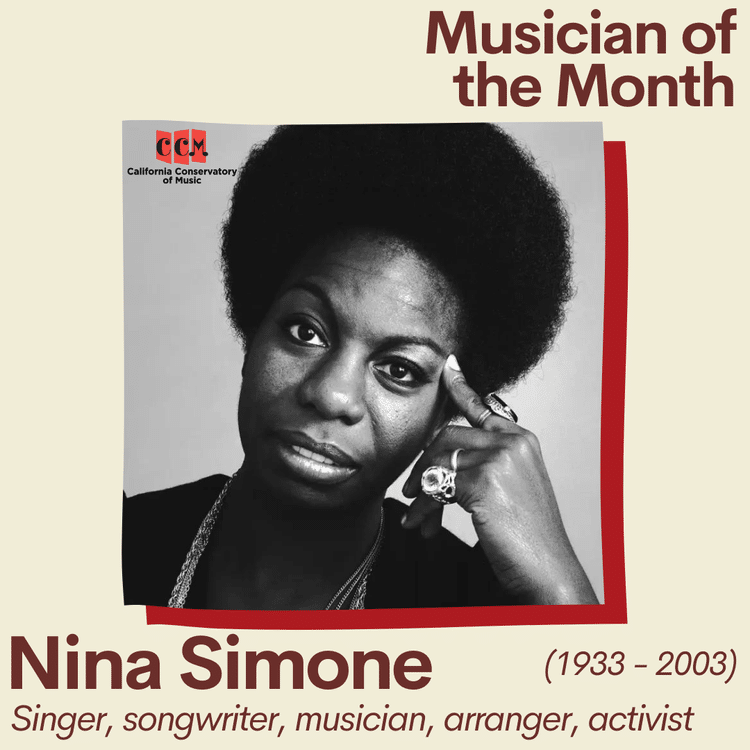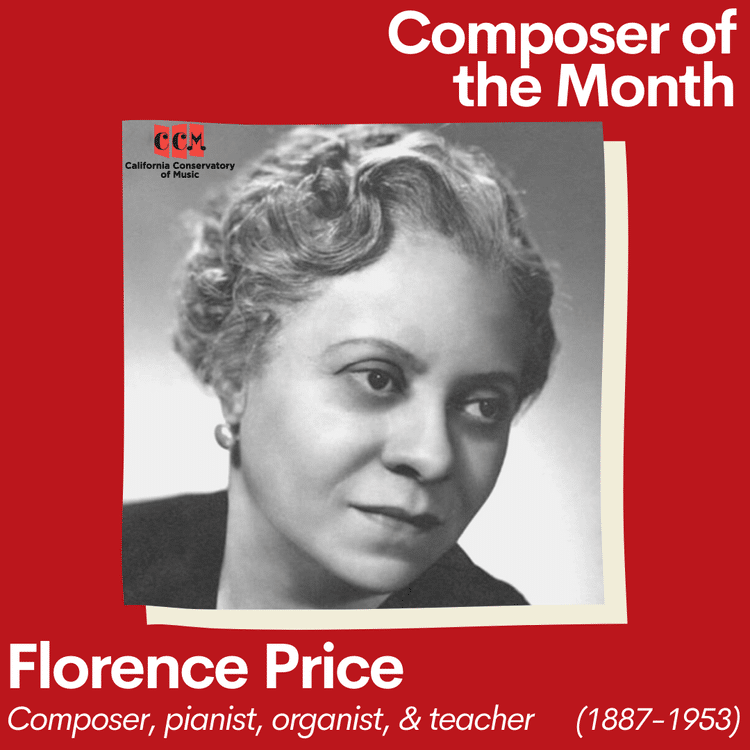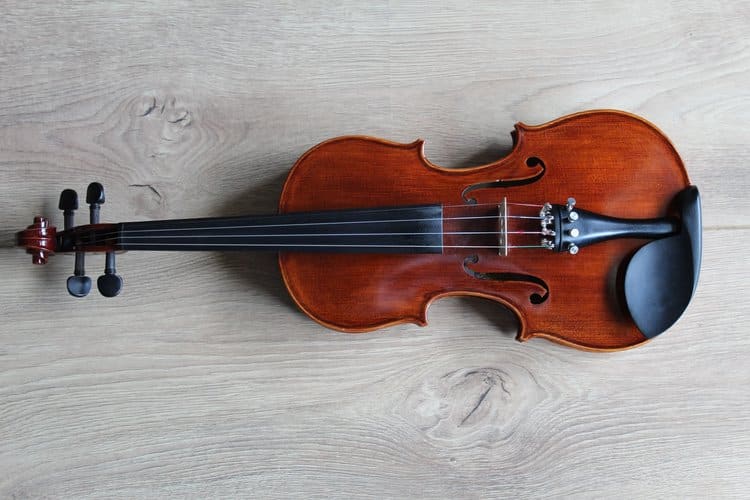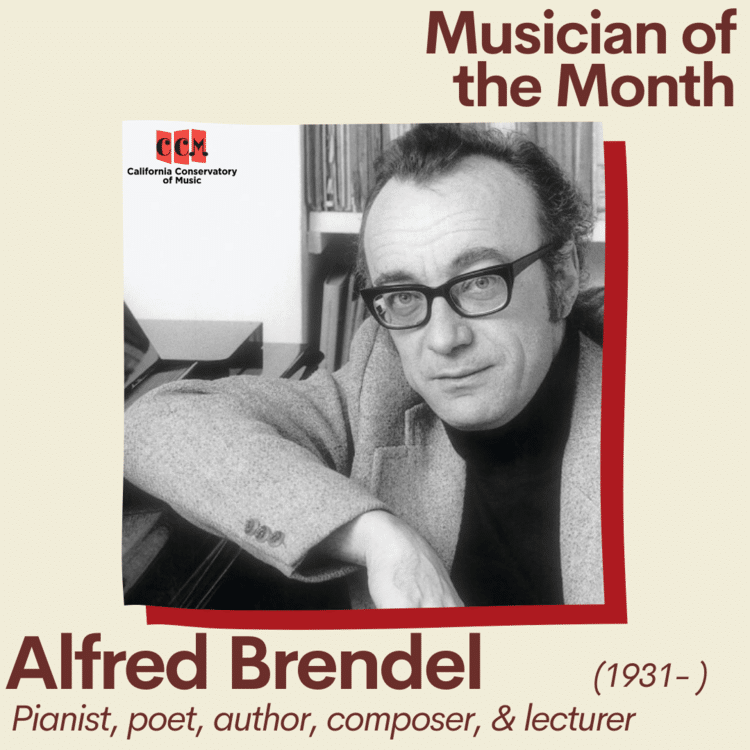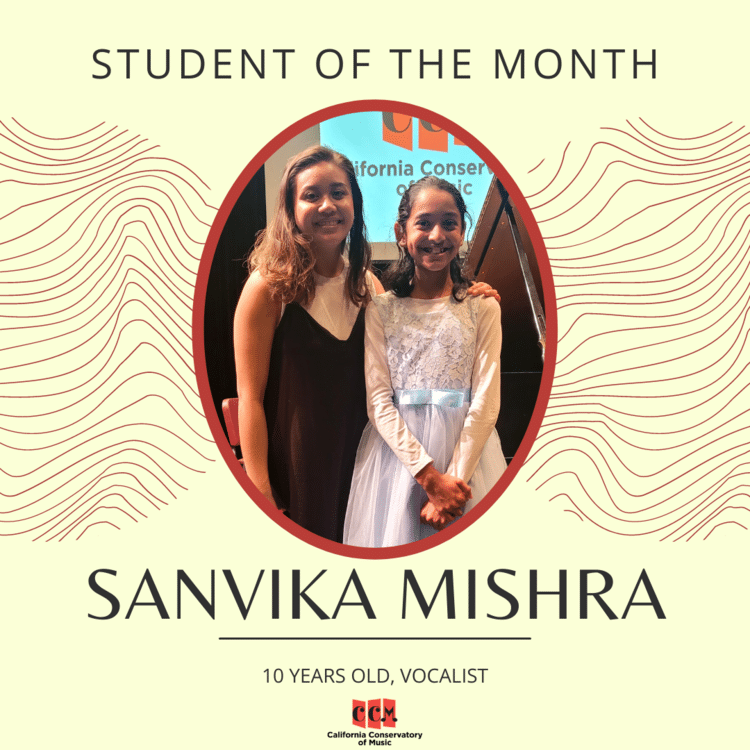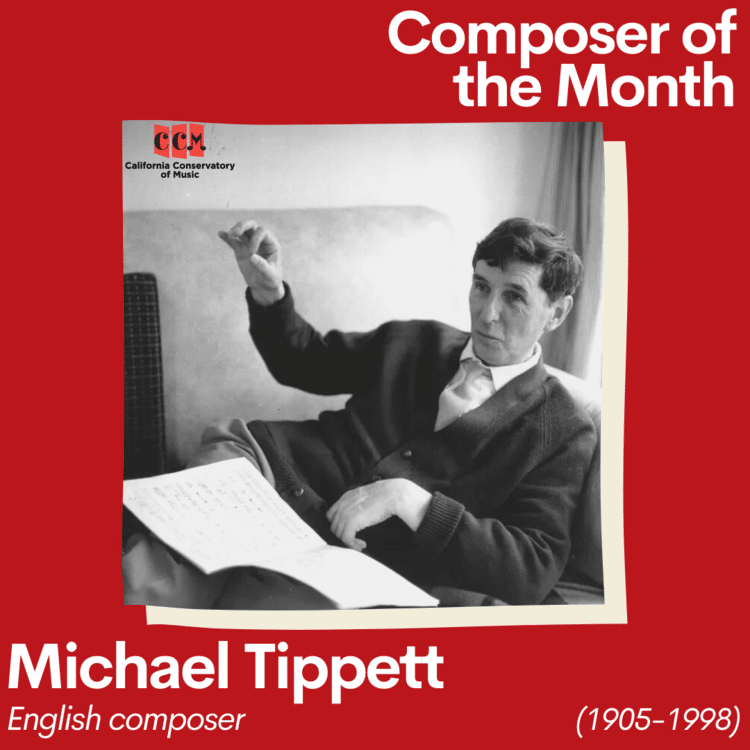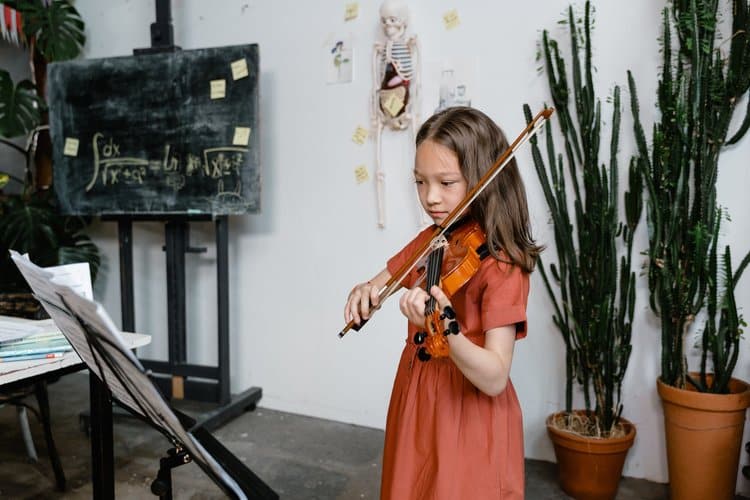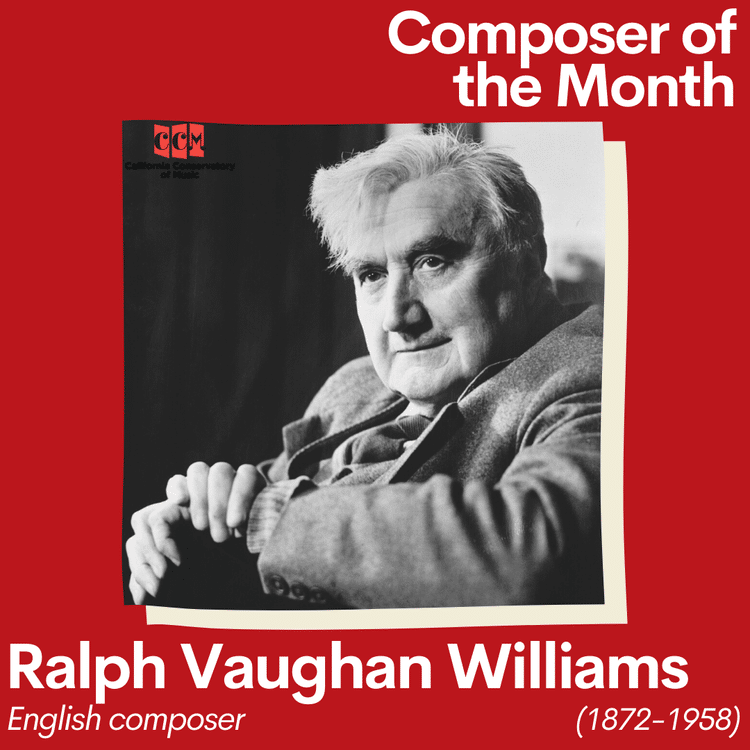Is Mozart your source of inspiration? Do you want to follow his musical genius and create tunes of your own? So, what is stopping you? Oh right, an electric piano. If this is your first time, getting a piano for yourself can be quite intimidating. You might not know which one is the best or what you should look for in an electric piano before buying it. Fret not! We can help you!
Before we come to piano recommendations, let’s look at some of the features you need to keep in mind before you decide on a piano.
Piano Keys Response
It is very important for your keyboard keys to respond as soon as you press on them. Some keyboards have unweighted keys that are comparatively easier to push on rather than weighted ones. However, when playing music as a beginner you must be able to feel every move and weighted piano keys should be a good option.
Sound
The sound of a piano is of prime importance, choose a keyboard piano that produces the same sound that a traditional one does.
Size
If you are an adult looking for a keyboard, it is best that you get a full-size keyboard. On the other hand, if you are a beginner or a child, getting a smaller keyboard might be the best option for you.
Best Electric Keyboard Options for You
Casio CT-X700
If you are on a budget, this keyboard is the best one for you. In this price range, you will not find many keyboards that offer Acoustic Intelligent Expression sound engines. It is also a great bargain for beginners as it provides 195 preprogrammed rhythms and demo songs with practice exercises. You can use them to sharpen your skills.
In addition to that, you can easily record songs using its six-track recorder. This keyboard also allows you to connect with other devices and listen to the songs you want to listen to. A con of this keyboard can be the complex nature of its controls that may confuse beginner music enthusiasts.
Roland Go: KEYS
Fun and learning go hand in hand! If you want a keyboard that gives you the element of fun along with the learning, this keyboard is for you. It is a compact keyboard with a completely wireless operation, which makes it great for you to carry around as you please. It can also offer great entertainment for parties, as you can play along to songs on it and be the life of the party. The piano comes with a 30,000-note song recorder and 500 high-quality sounds that are a great bargain for the price. Reviewers go on to say that the only observable con of this piano is its temperamental performance controls.
Yamaha Genos
Are you an enthusiast with no budget limitations? Well, then there is no reason to overlook this beauty. The Yamaha Genos is mostly used by professional music producers and it provides features that cater to their requirements. Its sound quality is unmatched, however, it does not come with built-in speakers. You get luxury features with this piano including assignable knobs, vocoder functions, audio recording, and voice harmony, among others.
If you can handle the price tag, this keyboard comes highly recommended.
Rockjam RJ461AX
Rockjam is known as the brand that caters to newbies and comes with an affordable price tag. This keyboard is the best one for your little pianist. It has the best features you could ask for and does not even put a dent in your pocket.
To keep the young ones motivated, this electric piano offers voice commands to stream tunes so that they can play along to them. Moreover, you also get piano stickers and a mobile application to coordinate with. If you want to develop a passion for piano in your ward, this will help you to achieve just that.
Korg EK-50L Electronic Keyboard
The Korg EK-50L is the professional keyboard of your dreams. It has countless professional features that include a 12- track sequencer, more than 35 user registration slots, and a half pedaling support. The best part about this keyboard is its high-volume speakers. The piano also comes with a great software bundle that makes it a lot easier to use.
These keyboards are currently ruling the electric piano market. Make sure you assess your needs and make the best choice among them. There are several other pianos that you can check out, but the ones mentioned here come recommended.
A rebel with a cause, a legendary pianist and singer, and a dignified diva. Nina Simone played from her soul and used her music to fight injustices. Her resilience is commendable because she did not give up.
Even when people didn’t invite her to perform and radio stations stopped playing her songs, she still did not stop. She used her music to make an even louder noise.
That is what brave and strong women like Nina Simone do. Let’s take a look at her interesting life and career.
Background
Born Eunice Waymon in Tyron, North California in 1933. She was interested in music ever since she was a child and she started taking piano and music lessons at the age of three! That is also when she started singing in the choir of her church.
Her mother was a Methodist minister and her father was a preacher and a handyman. She practically grew up in the church. Her parents saw her gift of music early on and supported her in this.
This is because she had incredible talent as she could play anything by ear. Of course, her parents soon let her take classical music lessons with Muriel Mazzanovich. This was the time when Simone developed a love for Beethoven, Bach, Schubert, Chopin, and Brahms.
She graduated high school as valedictorian and the entire community vouched for her. They raised enough money for her so she could afford a scholarship and go to Julliard.
Life In Another Place
She attended Julliard and during that time she also provided piano lessons to make ends meet. She could not, however, and had to leave Julliard.
She then moved to Philadelphia and lived with her parents. She worked and saved money so she could go to a more affordable music program which ended up being the Curtis Institute of Music in Philadelphia. Sadly, she got rejected from there and claimed that it was racially motivated.
How Eunice Became Nina
After her rejection from the Curtis Institute she still had to make ends meet. This is when she auditioned for a bar in Atlantic City. She got the job and started mesmerizing people with her voice.
News spread like wildfire and soon enough, everyone knew there was a singer at the bar who was transforming the world of music. She had mastered the piano by then and her voice soothed every soul that came around.
She changed her name to Nina Simone so that her mother wouldn’t find out she was making a living through singing in bars.
Career, Activism, And Life
Everything turned around when she was 24 years old. The music industry recognized her talent and she got signed by Syd Nathan. She released her very first album in 1957.
During this entire time, she was recording album after album and created infinite new music. She even did covers of songs from The Beatles and Bob Dylan.
She always went against the odds and showed her talent in various ways. Her music style was bold, innovative, and a fusion of many. She also took a stance when it came to activism against the racial injustices taking place at the time.
During the 1960s, she was known as the musical voice of the Civil Rights Movement. She wrote many songs for the Black community and the injustices and discrimination against them.
As the 60s ended, Simone was tired of music and the divide in the country. She went on to live in a variety of countries and struggled with many things in life. She encountered problems with the IRS, her managers, record labels, her finances, and she was struggling with many mental health issues.
Her career took off again in the 80s and she toured from time to time. She did well for herself and performed in many places. However, it was reported that she was battling breast cancer and because of that, she passed away in 2003 in her home in France.
People like Simone may physically pass away, but they leave behind an everlasting legacy and beauty in the world that lives on forever. She was an amazing singer and musician who never let anything stop her.
REACH OUT TO US
To learn how you can begin following your musical dreams, contact the California Conservatory of Music. We provide voice lessons, piano lessons, guitar lessons, and violin lessons. Contact us now to set up your free 15-minute trial lesson!
This month we’re so excited to feature CCM guitar student, Eric Wang, as our February 2022 Student of the Month! Eric has been taking guitar lessons for around 11 years at CCM’s Sunnyvale location with Teacher Robert. Teacher Robert and the rest of us here at CCM are so proud of Eric and were so happy to see him featured on NPR’s Instagram this month! Congrats to Eric for all of his accomplishments and amazing progress over the years!
Read below to see Eric’s great advice for CCM students just starting on their musical journey, and don’t forget to check out the parent spotlight as well.
Q: What is your name?
A: My name’s Eric Wang.
Q: How old are you?
A: 17 years old.
Q: Who is your teacher?
A: I study with Robert Miller.
Q: What advice would you give to a guitar student just starting out at CCM?
A: I’d say that just starting a musical instrument is always difficult. Improvement is not easy, and you may feel discouraged by your lack of progress sometimes. However, just as long as you keep playing, you’ll definitely be rewarded.
I’d also say to always be listening: to recordings and, if possible, live music. One of the key parts about becoming better at music is to listen to the music you play. Just being exposed to classical music can help you develop a better understanding and enjoyment of playing it.
Q: What piece are you looking forward to learning someday?
A: I’m really hoping to learn the Tahhiyya Li Ossoulina, by Sergio Assad, performed by the Assad duo. I’ve listened to it so much along with Jardim Abandonado, my favorite album of theirs. It’s an electrifying and enthralling piece that I’m very much looking forward to learn.
Q: What is your favorite thing about playing guitar?
A: I’d say it’s the element of interpretation that makes guitar and music in general so beautiful for me. With any piece, it’s possible to have an infinite amount of different interpretations. Finding one’s own musical voice within that multitude is one of the most fun and genuine parts about music for me. Guitar stands out as an instrument that offers an unparalleled array of color and timbre and is such a unique medium to form an interpretation.
Q: What is your favorite food?
A: I really like noodles.
Q: Do you have a pet?
A: No.
Q: Do you play any sports or do any other activities outside of music lessons?
A: I’m pretty involved with my school’s astronomy program. I teach in the class and the research program, and work with friends on projects on really cool astronomy topics, like black holes and variable stars. I’m also on my school’s track and field team, previously doing cross country in the fall semester.
Q: What do you want to be when you grow up?
A: I’m not sure yet, but I’d like to become a professor or teacher of sorts, whether that’s in astrophysics and music. Teaching is one of the things that I really enjoy doing.
Q: What is your most memorable experience at CCM?
A: There really have been so many, from masterclasses with great musicians to just inspiring moments in private lessons. If I had to choose, I’d probably say the 2018 Guitar Foundation of America competition. Getting to play with the ensemble alongside my friends at the GFA was a really fun experience.
……………………………………………………………………………………………………………………
Parent Spotlight – Gaoyuan Wang
Q: Regarding guitar, what are you most proud of your child accomplishing?
A: We are proud that with all the help and his own persistence, Eric found his passion, very likely a lifetime passion, in music at young age and he has been actively trying to make differences with music for the community.
Q: What advice would you give to a new parent starting in the program?
A: I feel that help your child develop his/her strong passion in music is way more important that insisting on 100% correct in fingering or practicing long time everyday. Listening to music often, going to concerts, participating in group lessons are all good ways to cultivate passion.
Q: Why did you decide to give your child a musical upbringing?
A: We feel music education is one of the best possible gifts parents can give to a child as it is a lifelong asset that he/she will always possess and enjoy. Also, music education is a quality time that we get to spend with our children.
One of the main purposes of our Composer of the Month initiative is to provide excellent opportunities for whole-community engagement and musical enlightenment around each month’s composer. Another reason is to lift and honor the work of music composers who have been previously excluded from the Western classical canon because of their gender, race, or both.
In honor of Black History Month, the California Conservatory of Music is celebrating the achievements and enduring legacy of Florence Price.
Florence Price’s Personal Life
Florence Beatrice Price was an American classical composer, organist, pianist, and music teacher. She was born in Little Rock, Arkansas, in 1887, where she took piano lessons and received a music education from her mother. This was because all the white music teachers in the area refused to take her on as a student.
Price lived in Little Rock, Arkansas until she left home in order to attend the New England Conservatory. It was one of the handfuls of conservatories that admitted African-American and Black students at the time.
It is worth noting that after graduation, Price returned to Little Rock, Arkansas, where she formally taught music and got married. She raised a family until the increasing dangers posed by racism and discrimination spurred Price and her family to move to Chicago.
Did you know that Florence Price is most well-known as the first Black woman to have her musical work performed by a notable American orchestra?
Life as a Composer
Impressively, Price composed more than 300 works. These works include symphonies, songs, and chamber works noted for their enchanting lyricism and lush orchestration. When she was 14, Price graduated as a high school valedictorian. Note that after two years, in 1903, she left Little Rock in order to attend the New England Conservatory of Music.
Keep in mind that in only 3 years at the conservatory, Price managed to gain a soloist’s diploma in organ as well as a teacher’s diploma in piano. Also, the principal, George Chadwick, encouraged and persuaded Price to compose, which turned out to be important and life-changing advice. Did you know that she took lessons in counterpoint and composition with famous composer Benjamin Cutter in her spare time?
In 1928, in order to escape growing racial discrimination and oppression in Little Rock, Arkansas, Price, and her family moved to Chicago. In Chicago, Price flourished creatively and won prizes as well as multiple publication contracts for her impressive piano pieces.
She also penned many popular songs for radio commercials and even arranged spirituals for performances. She then started writing symphonies in 1931.
Note that Price joined the famous R Nathaniel Dett Club of Music and the Allied Arts in order to make friendships with like-minded artists and musicians. She continued her composition studies at notable institutions, like the American Conservatory of Music, the University of Chicago, the Chicago Teachers College, and the Chicago Musical College.
Price’s career as a music composer catapulted to new heights after she moved to Chicago. In Chicago, she had developed several contacts while taking various summer courses and lessons at the Chicago Musical College.
Keep in mind that with the added support of some leading figures, especially within the Chicago Black Renaissance, such as Estelle Bonds, whose home was the principal gathering place for musicians and artists, Price’s works won many contests designed to support and help black composers.
The success of Price’s E Minor symphony helped cement her reputation and status, and many of her orchestral works were later performed by prominent ensembles. This is why students taking music lessons at the California Conservatory of Music are inspired by her work. To this day, Price’s compositions are an important part of Redwood City Music Lessons and Sunnyvale music lessons .
Some Notable Facts
- It was her move to Chicago that considerably expanded the music options available to Florence Price as a composer.
- Price studied with George Chadwick at the New England Conservatory.
- She wrote radio jingles and many popular songs besides her more serious compositions.
- Price was the only one of about 2,000 students to pursue a double-major in piano and organ.
- Price remained active and influential as a composer and music teacher until her death on June 9, 1953.
Many people know that the Italian luthier Andrea Amati developed the modern violin family in 1555. However, it is worth noting that various bowed-stringed musical instruments were invented before this date. It is helpful to consider the violin as an instrument that has gradually evolved over time instead of a perfected product that was invented instantaneously.
The elegant and traditional form of the violin may seem etched in stone as if this form has been a standard throughout history. However, the violin is a more recent invention compared to other instruments, though its creation was a slow and long process.
The Rebab and other Iterations
Did you know that one of the first recognizable ancestors of the modern violin is the Rebab? This instrument originated in the Middle East during the eighth century. You will also see the influence of the rebec (that emerged in Spain) and Arabian rabab in the modern violin.
The Rebab evolved with time in Europe into two separate and unique families of musical instruments: those that players held in their arms and were square-shaped (‘lira da braccio’) and those that players could position between their legs and had uniquely shaped sloped shoulders (‘lira da gamba’).
Both of these instruments had immense success; however, note that over time, the handheld instruments became more famous, leading to the development of the first violin in 1550.
The Emergence of the Violin
The violin emerged in 1550 in two Italian areas, Cremona and Brescia. While we don’t know who built the first violin, the first notable violin maker family in Cremona, Italy, was Amati. Later on the famous and excellent violin maker, Stradivarius, worked and lived in the same area. Even these days, most violins are developed following the design principles of Stradivarius.
The quality of violins made in Cremona led to the town being considered the home of the violin. Also, Cremona was home to the famous workshop of the notable Guarneri family of prolific instrument makers (Giovanni, Andrea, Giuseppe, and Bartolomeo.)
How has the Violin Changed Over the Years?
The violin has changed a little over time. For example, the earliest versions had only three strings. Violin makers added a fourth string in the middle of the 16th century. Did you know that all the violin strings were made from gut until about 1700?
After that, one string (the G String) with a silver wire was added in order to change the sound. However, nowadays all strings are a mixture of metal and nylon.
Note that the E string is often made of steel. In the eighteenth century, the violin underwent its most major and significant physical evolution. This was the change in the overall height of the bridge and extension of the neck and fingerboard. These changes ultimately improved the quality and volume of the sound.
The Violin Today
If you are interested in violin lessons, you probably know that the violin is one of the most popular musical instruments. Nowadays, violins are specially made so that they can produce high-quality sound electronically by using microphones and amplifiers, which eliminates the need for sound boxes.
Musicians use various amplifier settings to produce fully electric sounds. This sound can also be distorted in order to create different tonal qualities. It is no secret that the violin has gradually evolved to be a very valuable and versatile instrument.
Music Lessons and Education for Kids
As an inspiring violinist, your child should be aware of the violin’s predecessors, such as the Rebab, and how the violin carved its way into a prospering musical community already saturated with many instruments.
If your child is interested in violin lessons, you can start their musical journey with The California Conservatory of Music. Music education and lessons are important aspects of providing your children with a well-rounded education. Sunnyvale music lessons and Redwood City music lessons can provide developmentally appropriate music education for young children, introducing various concepts such as body movement, rhythm, and singing to preschoolers and toddlers.
Are you looking for violin lessons to help with the school orchestra? Note that students who sign up with the California Conservatory of Music will learn and become advanced and creative students and also benefit from improved discipline, friendships, and life skills.
Alfred Brendel is an Austrian author, poet and pianist, well-known for his contribution to the music industry. He is our musician of the month as he was born in January and possesses many talents and hobbies worth noting. He is an author and a poet and takes great interest in literature as well. His concerts and piano recordings established a very respectable image of his work amongst musicians and fans alike, securing him a spot in the list of the greatest musicians of the 20th and 21st centuries. Brendel is well-known for his masterpieces from Mozart to Beethoven and Brahms.
Early Life
Alfred Brendel was born on January 5, 1931, in Wiesenberg. He wasn’t born into a family that was very passionate about music, but that’s where his heart was.
Brendel got into music at a very early age when he started entertaining guests at his father’s hotel near the Adriatic coast where they had moved.
Later, his family shifted to a house in Zagreb and opened a cinema there. This was when his family started giving attention to the arts and music. This was also where Brendel began learning piano. At the age of eleven, he had practiced enough that it was evident he possessed a huge amount of talent.
He was self-taught for most of his early career as he never attended any piano lessons or music lessons. However, he eventually took some classes with Edwin Fischer and Eduard Steuermann.
He wrote and performed his piano music in 1948 when he was 17 years old. This was his first debut recital, which was held in Graz, The Fugue in Piano Literature. After Graz, his career as a pianist took off and his talent began getting vast recognition. Along with piano, he continued his other interests such as literature, painting, and composing.
Works Of Alfred Brendel
The popular Austrian musician and composer has a full catalogue of highly notable performances.
Often taking responsibility for the piece he was playing, Brendel’s performances were referred to as ‘cerebral’ by some critics. Interpretations of Beethoven, Mozart, and Haydn are notable performances of his.
Alfred Brendel was the first pianist to solo record a complete Beethoven sonata. He recorded the sonata and later went on to perform two more complete sonatas.
He also recorded several pieces from Mozart’s Great Piano Concertos and Schubert’s Last Three Piano Sonatas. His third record was Decca in which he recorded several of Beethoven’s sonatas as well as the works from Mozart and Mussorgsky.
Brendel was also well-known for international concerts and how much he had to offer from live performances. However, arthritis affected his concert performances, and he was forced to slow down on several demanding pieces.
Awards And Achievements
A survey in Limelight, rightfully ranked Brendel amongst the top ten greatest pianists of all time. He had a successful career that led him towards several awards and accolades, such as the Leonie Sonning Music Prize in 2002 and a Julliard Medal in 2011.
In 2009, a year after winning the Herbert von Karajan Music Prize, he was featured in a movie that went on to win several awards.
Brendel was also honored by being voted into Gramophone’s Hall of Fame in 2012, two years before he was given the golden Mozart medal.
Several well-known universities, including Yale, Oxford, Cambridge, and New York, awarded Brendel with honorary doctorates throughout his career.
Echo Klassik even gave Brendel a Lifetime Achievement Award in 2016 for his contribution to the music industry throughout the years.
Reach Out To Us
Alfred Brendel taught us that great things can be achieved in the music industry and you should keep yourself motivated to practice! Musicians like Brendel inspire us to pursue our dreams and make a notable, respected name for ourselves. If you’re a musician and would like to pursue your journey through the incredible language of music, contact us. The California Conservatory of Music, with the help of fantastic teachers and talented colleagues, can give you the tools to go as far in music as you are willing to work for. Reach out to us and schedule your music lessons and piano lessons today.
This month we are honored to feature CCM voice student, Sanvika Mishra, as our January 2022 Student of the Month! Sanvika has been taking voice lessons for around 6 months at CCM’s Sunnyvale location with Teacher Gaby. Teacher Gaby and the rest of us here at CCM have greatly enjoyed seeing Sanvika’s talents progress, especially at her amazing performance of Into the Unknown at our most recent winter recital! Congrats to Sanvika for her hard work and dedication!
Read below to see Sanvika’s great advice for CCM students just starting on their musical journey, and don’t forget to check out the parent spotlight as well.
Q: What is your name?
A: My name is Sanvika Mishra
Q: How old are you?
A: I am 10 years old.
Q: Who is your teacher?
A: Ms. Gaby is my teacher at CCM.
Q: What advice would you give to a voice student just starting out at CCM?
A: Practice everyday and enjoy while singing the songs. Teachers at CCM are very supportive and encouraging, and it helps the learning to be easy and fun.
Q: What song are you looking forward to learning/singing someday?\
A: I mostly enjoy singing Pop songs. But, I am looking forward to sing other genre songs as well. In recent days, I am interested to try the song Scars to Your Beautiful by Alessia Cara.
Q: What is your favorite thing about singing?
A: I love to improve my range, feel the song’s mood, and the favorite part is my performance.
Q: What is your favorite food?
A: One of my favorite food is butter chicken with naan. I also love some soups like miso soup.
Q: Do you have a pet?
A: No, I don’t have one. But I wish to have a pet in the future.
Q: Do you play any sports or do any other activities outside of music lessons?
A: I am also learning Kathak – an Indian classical dance form. I play tennis sometimes, but love the outdoor hiking, trail walks, camping the most.
Q: What do you want to be when you grow up?
A: I wish to be a singer and a Web designer.
Q: What is your most memorable experience at CCM?
A: My performance in CCM’s bi-annual recital is one of my favorite moments so far. I loved being performing there and it motivated me to perform even better in coming future.
……………………………………………………………………………………………………………………
Parent Spotlight – Sudhir Misra & Subhra S. Mahapatra
Q: Regarding voice instruction, what are you most proud of your child accomplishing?
A: We are happy that Sanvika enjoys and sings with confidence. She shows great interest in regular practice and rehearsals. We are proud of her commitment and sincerity in pursuing her dream to be a singer and a performer.
Q: What advice would you give a new parent starting in the program?
A: Listen to the music together with your kid, which they enjoy. Let them sing the songs they enjoy and love to sing, it motivates them to keep-up the enthusiasm in learning.
Q: Why did you decide to give your child a musical upbringing?
A: Both of us love music and songs. From an early age, Sanvika, too has shown inclination towards singing and music. We hope, she could accomplish her singing dreams and be successful in her musical journey.
California Conservatory of Music is continuing to celebrate Composer of the Month this month by honoring Michael Tippett, a prolific British composer, a humanitarian, and a pacifist. Did you know that the gamut of his work comprises four symphonies, five operas, and five-string quartets? He also wrote numerous songs, four piano sonatas, and amazing orchestral works, such as the Triple Concerto and several works for voices, which is fascinating.
Michael Tippett’s Personal Life
Sir Michael Tippett was born in 1905 in London and spent his childhood mainly in Suffolk. Tippett’s father had retired and had purchased a hotel in France. Tippett went to school in Edinburgh at the age of 13, but he didn’t like it there. This is why he attended the local Stamford Grammar School located in Lincolnshire.
It is worth noting that Tippett studied music at the Royal School of Music. Disillusioned and disenchanted by the harsh realities of the First World War, Tippett turned to socialism and then pacifism.
He was a conscientious objector in World War II and was briefly imprisoned in 1943. Did you know that Tippett rose to prominence during and after the Second World War? At that time, he was the Director of Music at Morley College.
Also, Tippett was a communist during the 1930s. Keep in mind that Tippett’s music and style were initially conservative. However, he soon developed a unique and strongly personal idiom, primarily based on long lyrical phrases and complex rhythms.
Life as a Composer
A music composer underrated in his earlier years, Michael Tippett seemed in the shadow of Ben Britten. Did you know that Tippett developed rather slowly as a music composer? Tippett’s early music was conservative; however, note that in the late 1930s, he created a personal and modernistic idiom that was uniquely marked by intricate counterpoint, rhapsodic lyricism, and polyphonic rhythms.
From 1928, he lived in Oxted, Surrey, and taught French in a prep school. He also conducted a concert and operatic society, enabling him to spend long periods of time at composition. Beethoven was an important inspiration for Tippett. And one of his best and most notable works is the Concerto for Double String Orchestra. Note that it shows his love and passion for folk music and interest in English music of the Renaissance era.
You should know that Tippett’s operas include The Knot Garden, A Midsummer Marriage, King Priam, and The Ice Break. He also wrote several choral works. This is why students taking music lessons at the California Conservatory of Music are inspired by his work. And if you are considering taking guitar lessons, you should be familiar with his work.
Tippett’s last and famous orchestral work, The Rose Lake, was also premiered by the notable London Symphony Orchestra as part of a 2-week long festival celebrating his ninetieth birthday at the Barbican Centre in London.
And during a 2-month tour of Canada and the US, Tippett also heard this greatly acclaimed and influential work performed 11 times. To this day, his compositions are an essential part of Redwood City Music Lessons.
In 1966, Tippett was knighted and received the Order of Merit in 1983. Tippett remained active composing as well as conducting. You will be happy to know that in 1979, Michael Tippett also established The Michael Tippett Musical Foundation.
Tippett died in early 1998. Many composers, such as Mark-Anthony Turnage, William Mathias, David Matthews, and Edward Cowie, have admitted his influence on their work.
Some Notable Facts
- Michael Tippett is one of the greatest, most original, and influential composers of the 20th century.
- Michael Tippett and his brother learned to speak fluent French when they were quite young.
- The only formal musical training he received as a child was his piano lessons.
- Tippett received several honors and awards. He was also made a CBE in 1959 and was knighted in 1966. He became a Companion of Honor in 1979.
If you are looking for violin, guitar or piano lessons, Sunnyvale music lessons and Redwood City Music Lessons can provide developmentally appropriate music education for young children, introducing various concepts such as body movement, rhythm, and singing to preschoolers and toddlers.
In 1995, following Tippett’s autobiography, Those Twentieth Century Blues, his notable and definitive collection of essays was published. He also wrote an idiosyncratic contribution to the Purcell tercentenary celebrations, known as the Caliban’s Song, for the BBC.
Whether taking private music lessons, a group class, or learning music on your own, your child’s progress with the instrument depends largely on how they practice! Are you wondering how you can organize and structure their music lessons and practice sessions?
Any great musician will tell you that it usually takes countless hours of hard work and practice in order to reach the level that they are at. However, if they are completely honest, they will also admit that there are many occasions when they just don’t feel like practicing. Sometimes, your child may feel the same way.
One of the best ways to make sure that your child’s practice time is effective and fun is to manage their time well by organizing their practice sessions. Here are a few tips and insights that adults and children can use to organize their sessions better:
1. USING PRACTICE SPACE TO LOG YOUR PRACTICE
It’s 2021, and we have access to many impressive technological innovations, such as apps right on our smartphones! Practicing an instrument can be exciting and fun, but also stressful for many kids. They have to determine what to practice and they may not get everything done. This is where logging your practice can be helpful. There are many applications that you can use for this purpose.
For example, Practice Space is great as it helps you focus and have a better and more productive practice. This simple-to-use platform features a media and assignment library so that teachers can use content with students regularly. It lets you record all your practice sessions, take notes, and even track your practice time.
2. DON’T TRY TO PRACTICE EVERYTHING AT ONCE
It is important to break it up. Note that if your kid has just spent the entire day at school, they will probably want to spend some time on the couch catching up on their favorite TV shows. However, it doesn’t mean that your kid should skip their practice session entirely.
By keeping the practice session short – 15 minutes to 20 minutes – your child can achieve the best results. However, you have to be logical. For example, when deciding on a section, choose musically logical divisions. Note that a natural tendency is to work on music sections that are very large.
It is best to choose a section that seems reasonable in length and divide it into multiple sections to be played over several sessions.
3. DIVIDE PRACTICE INTO SECTIONS- TECHNIQUE, REVIEW PIECES, AND CURRENT REPERTOIRE
Keep in mind that depending on what music your kid is playing and what their goals are for the lessons, they will likely play technical exercises and review pieces.
You can divide your sessions into various techniques and sections. Note that practicing technique has two key parts. The first part is exercises such as triads, scales, and arpeggios. The second part is pieces called “etudes” or “studies.” You can also practice a new or current repertoire and have your child learn at least one or more new pieces.
Whether your child is just starting or is an experienced player, they should understand what deliberate practice is and how to execute it. If your child is playing exercises in addition to pieces, note that one excellent piano practice organizing technique is starting each practice session with a warm-up of scales. This should be followed by suitable exercises, and working on repertoire.
Keep in mind that dividing each practice session into various sections like this will help your child stay regular with what they are practicing.
4. HAVE FUN AND PLAY ANYTHING TO STAY MOTIVATED
While music is full of rules, when your kid is at home, give them the liberty to break these rules. Let them follow their curiosities. The important thing is to have fun during your music lessons. Note that an easy way to make your music practice seem like dreaded work is just focusing on a single problem.
You can easily avoid this by arranging your practice schedule with variety to include various things that you like to do and intersperse them with challenges. It is best to alternate challenges with fun and engaging activities so that you don’t feel like the practice session is a chore. Keep in mind that experimentation is important and is also the first step in composing a masterpiece.
Music Lessons and Education for Kids
Maybe your child is not having fun practicing their instrument because their music teacher is uninspiring and their music lessons are rigid. If that is the case, you should look elsewhere.
Here at the California Conservatory of Music, we offer a whole range of high-quality music lessons, such as violin and guitar lessons. With Redwood City music lessons, you can set your kid up for success where they will learn excellent organization techniques. Similarly, Sunnyvale music lessons can provide developmentally appropriate music education for young children. Get in touch today to learn more.
California Conservatory of Music is continuing to celebrate Composer of the Month this month by honoring Ralph Vaughan Williams, an English composer and a proponent of nationalism in music. He composed Fantasia on Greensleeves, an exquisite four-minute orchestral miniature.
Ralph Vaughan’s Personal Life
Ralph Vaughan Williams was the son of a clergyman and was born on Oct 12, 1872 at Down Ampney in Gloucestershire. Ralph attended the Royal College of Music. After that, he took music degrees at Cambridge University and Trinity College. He also studied with Max Bruch in Berlin. Did you know that Ralph’s mother was the niece of the renowned scientist Charles Darwin, who came up with the groundbreaking theory of evolution?
When Ralph was a child, he already knew that he wanted to be a music composer. Playing the violin exquisitely in the Charterhouse orchestra, Ralph started composing at age six. This is why if you are considering taking violin lessons, you should be familiar with his work. Ralph also attended the Royal College of Music starting in 1890 as a music composition student.
In 1892, he entered Trinity College in order to study history as well as pursue a bachelor’s degree in music. In 1897, Ralph married Adeline Fisher. Following her death, Ralph got married to Ursula Wood in 1953.
Life as a Composer
It is worth noting that his early works include mainly chamber music and a few songs. As a historian, Ralph also wrote articles and periodicals while contributing to the 2nd edition of the notable Grove’s Dictionary of Music and Musicians. Did you know that at the heart of his innovation and creativity lie a sequence of nine brilliant symphonies that move gradually from meditative pastoral music to unique themes of existential dramas?
Drawing on the vibrant and rich treasury of national folk songs and dance, Ralph also managed to create a uniquely English style that’s universal in its range of appeal. It is worth noting that in 1905, Ralph Vaughan premiered his work that became his principal and most influential work around the turn of the century. It was a choral setting of Walt Whitman adequately titled Toward the Unknown Region.
In 1904, Williams joined the prestigious English Folk Song Society. In fact, for many years he was active in arranging and collecting old English melodies. Keep in mind that around this time, he also became familiar and intrigued with the music of Henry Purcell and William Byrd.
You should know that the modal and vibrant melodies of various folk songs as well as the smooth counterpoint and free rhythms of the early music composers, became vital elements of Ralph Vaughan’s compositions. Remember that The Fantasia on a Theme by Tallis is one of Ralph Vaughan’s most important and influential early compositions.
Did you know that with this impressive piece, English music shook off two centuries of German domination, tapping a rich and unique source of indigenous music?
And the antiphonal string writing and superb modal harmonies contrast strongly with the feverish and lush music that people were composing in Germany and France at this time. Also, the London Symphony (1914) is another critical piece in Vaughan’s development.
If you are considering taking music lessons at the California Conservatory of Music, you should look into these works.
STAGE WORKS
Keep in mind that the stage music of Ralph Vaughan includes the famous Shakespearean opera Sir John in Love and the masque for dancing Job. It also consists of the ‘morality’ in The Pilgrim’s Progress. Also, incidental music pieces for the theatre include notable music for The Wasps by Aristophanes. Ralph also wrote numerous film scores. To this day, his compositions are an important part of Redwood City Music Lessons and Sunnyvale music lessons.
Some Notable Facts
- Some of Vaughan’s compositions include film scores, nine symphonies, and six operas
- Ralph Vaughan’s music and style express profound regard for folk tunes and show patriotism towards England in a subtle form
- He taught at the Royal College of Music until 1939
- Ralph also studied with Maurice Ravel and Max Bruch and enjoyed engaging and inspirational musical friendships with George Butterworth and Gustav Holst.
If you are looking for violin or piano lessons, Sunnyvale music lessons and Redwood City Music Lessons can provide appropriate and engaging music education for young children and toddlers.
Vaughan Williams also made a significant contribution to English vocal and choral repertoire in compositions that include the amazing Serenade to Music.


